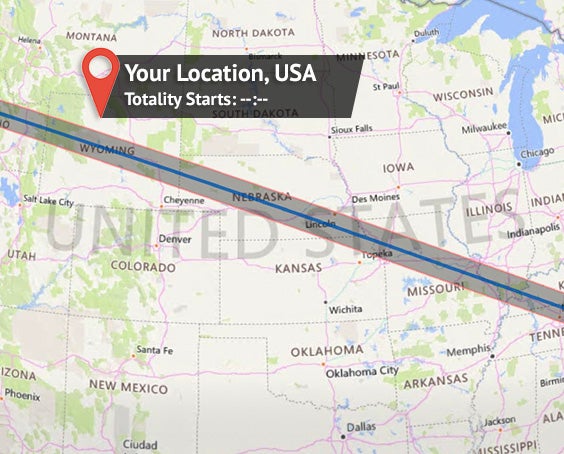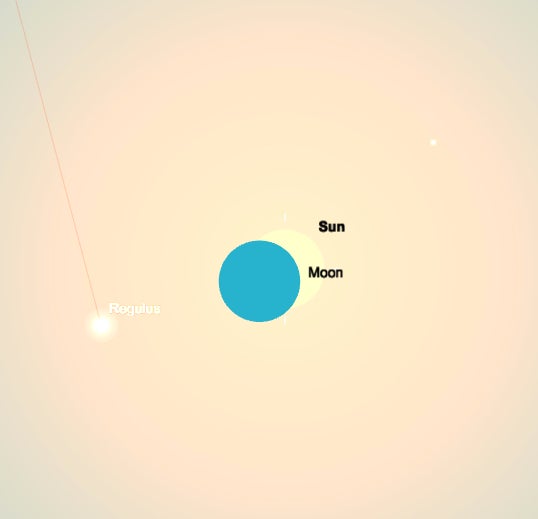The Great American Eclipse is less than a month away. And the key to observing the eclipse safely and successfully is having the right tools at your fingertips. You’ve got your eclipse glasses, and you’ve likely got your viewing location picked out. (If you don’t, now is the time to put that at the top of your to-do list.) But do you know what time the show is going to start? Do you know how long totality will last from where you’ll be standing on August 21?
The Eclipse 2017 Widget is the tool for this job. Powered by SkySafari 5, this interactive widget is ideal for all eclipse observers, whether you’ll be in the path of totality or not. The Eclipse 2017 Widget is also available in Eclipse Safari, a free app for iOS and Android.
Simply choose a location — you can click the map or enter an address or landmark in the search bar, then choose your ideal spot as the map zooms in — and you’ll immediately find out whether you’ll see a partial or total eclipse from that location. The widget also provides the percentage of solar coverage or the duration of totality, depending on the type of eclipse visible from the location you’ve chosen.
Most importantly, you’ll immediately learn the start and end times of the partial and total phases in local time, allowing you to plan your eclipse day schedule accordingly. For a simulated image of the sky, simply click “view” on the right next to the phase you’d like to see for a sky map showing the Sun, Moon, and even the nearby stars and planets you might glimpse as the sky grows darker. The slider on the bottom allows you to fast-forward or rewind time to watch the eclipse progress just as it will from the spot you’ve marked on the map.
And when the event is over, it’s time to count down to the next American total solar eclipse, just a few years away in 2024!
While the Great American Eclipse is certainly a great reason to cast your eyes to the sky, it’s not the only one. The versatile SkySafari 5 app is a great way to familiarize yourself with the sky, from its huge mobile database of over 25 million stars and 740 thousand galaxies to its telescope control and accurate sky simulation options.
Special thanks to Pedro Braganca of Simulation Curriculum Corp. for his contributions to this story.











